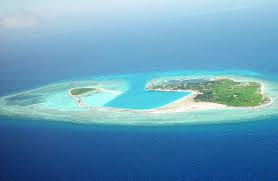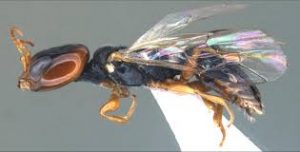Today’s Current Affairs: 12th November 2024 for UPSC IAS exams, State PSC exams, SSC CGL, State SSC, RRB, Railways, Banking Exam & IBPS, etc
Table of Contents
Lightning Strikes : More Common And Deadlier

Climate change is making lightning strikes around the world more common and deadlier.
- Strikes are possible because electrical charges can build up in a cloud beyond the ability of air to keep resisting their movement.
- It is an electrical discharge between charged particles in a cloud and the ground.
- It can occur between opposite charges within the thunderstorm cloud (intra-cloud lightning) or between opposite charges in the cloud and on the ground (cloud-to-ground lightning).
- It is one of the oldest observed natural phenomena on Earth. It can be seen in volcanic eruptions, extremely intense forest fires, surface nuclear detonations, heavy snowstorms, large hurricanes, and obviously, thunderstorms.
- While a lightning strike occurs between a cloud and an object on or near the ground, it takes the path of least resistance, which means it moves towards the closest object with the highest electric potential.
Hokersar Wetland : In News

Lack of water due to excess deficit rainfall at the Hokersar wetland in the Kashmir Valley in recent years has impacted the arrival of migratory bird populations in the region.
- Hokersar Wetland is known as the ‘Queen Wetland of Kashmir’, Hokersar (also known as Hokera) is a designated Ramsar site located in Srinagar, Jammu and Kashmir.
- It is a natural perennial wetland contiguous to the Jhelum basin.
- It gets water from the Doodhganga River (Tributary of Jhelum).
- It is located in the northwest Himalayan biogeographic province of Kashmir, back of the snow-draped Pir Panchal.
- It is an important source of food, spawning ground and nursery for fishes, besides offering feeding and breeding ground to a variety of water birds.
Sutlej River : Pollution

Anger mounts in Sri Ganganagar district, Rajasthan, against alleged pollution in the river Sutlej, which they blame on factories in the neighbouring Punjab.
- It is the longest of the five tributaries of the Indus River.
- It is also known as “Satadree”.
- The Sutlej River is primarily located to the north of the Vindhya Range, east of the Pakistani Central Makran Range,and south of the Hindu Kush region.
- It rises on the north slope of the Himalayas in Lake Rakshastal in southwestern Tibetat an elevation above 15,000 feet (4,600 metres).
- Length: It has a total length of 1550 km, out of which 529 km is in Pakistan.
- The hydrologyof the Sutlej is controlled by spring and summer snowmelt in the Himalayas and by the South Asian monsoon.
- It has many tributaries, with Baspa, Spiti, Nogli Khad, and Soan River being its main ones.
- Water from the Sutlej River has been allocated to India according to the Indus Waters Treaty of 1960.
- There are several major hydroelectric projects on the Sutlej, including the 1,000 MW Bhakra Dam, the 1,000 MW Karcham Wangtoo Hydroelectric Plant, and the 1,530 MW Nathpa Jhakri Dam.
Eurasian Otter : Rescue Operation

A rescue operation conducted by the Pune Forest Department and RESQ Charitable Trust has revealed a rare Eurasian Otter in Indapur, Pune District, a species previously unrecorded in this area.
- The Eurasian otter, also known as the European otter, Eurasian River otter, common otter, and Old-World otter, is a semiaquatic carnivorous mammal native to Eurasia.
- Scientific Name: Lutra lutra
- It has one of the widest distributions of all palearctic mammals, spanning countries in the Middle East, Europe, and Northern Africa, across to Eastern Russia, China, and other Asian countries.
- In India, it occurs in northern, northeast and southern India.
- It lives in a wide variety of aquatic habitats, including highland and lowland lakes, rivers, streams, marshes, swamp forests, and coastal areas, independent of their size, origin, or latitude.
- In the Indian subcontinent, it is found in cold hills and mountain streams.
- It is an elusive, solitary otter.
- It has sleek brown fur, which is often paler on the underside, and a long, lithe body with a thick tail and short legs.
- Adaptations for an aquatic lifestyle include webbed feet, the ability to close the small ears and the nose when underwater, and very dense, short fur that traps a layer of air to insulate the animal.
- Many sensitive hairs (‘vibrissae’) frame the snout; these help the otter to locate prey.
- It has an acute sense of sight, smell, and hearing.
- Vocalizations include a high-pitched whistle between a mother and her cubs, twittering noises produced during play-fighting, and cat-like noises when fighting.
- Conservation Status:
- IUCN: Near threatened
- Wildlife Protection Act, 1972: Schedule II
- CITES: Appendix I
Toto Tribe : Fighting For Identity

Totos, one of the smallest tribes in the world, are fighting for identity and suffering from infrastructure woes.
- Toto Tribe is an aboriginal Indo-Bhutanese tribe concentrated in the village of Totopara in the Alipurduar district of West Bengal.
- The Totopara village falls under the periphery of the Jaldapara Wildlife Sanctuary.
- It nestles just to the south of the border between Bhutan and West Bengal, on the bank of the Torsa River.
- Anthropologically, the Toto tribe is a branch of the Tibetan-Mongoloid ethnic group.
- They are one of the most endangered tribes in the world, with just over 1,600 members The Toto tribe is often described as ‘a vanishing tribe’ on the verge of extinction.
- They are categorised as a Particularly Vulnerable Tribal Group (PVTG).
- It is a Sino-Tibetan language spoken by the Toto people and is written in the Bengali script.
- Totos are endogamous and are divided into 13 exogamous clans, from which, they choose to marry.
- Unique to their culture is the idea of having only a single wife, and they strongly advocate an anti-dowry system, unlike neighbouring tribal practices.
- Their houses are elevated bamboo huts covered by thatched roofs.
- In the past, Totos were mainly food gatherers and practiced slashes and burn types, of cultivation.
- Along with this, the Toto families earn a good amount of money by working as porters carrying oranges from the different gardens of Bhutan to Totopara.
- With the passage of time, occupational diversification has taken place. At present, they have become settled agriculturists.
Scarborough Shoal:

China recently released geographic coordinates marking baselines around the contested Scarborough Shoal in the South China Sea.
- The Scarborough Shoal (also known in English as the Scarborough Reef) is an oceanic coral atoll that developed on top of a seamount into a triangle shape in the eastern part of the South China Sea.
- It is located some 220 kilometers west of the Philippines’ Island of Luzon.
- It is the largest atoll in the South China Sea, submerged at high tide with few rocks above sea level.
- This atoll extends 18 km along its northwest-southeast axis and reaches 10 km along its northeast-southwest axis.
- The deep waters around the shoal make it a productive fishing area, rich in marine life, and the lagoon also contains many commercially valuable shellfish and sea cucumbers.
- The shoal is the source of an ongoing and, so far, unresolved dispute between the People’s Republic of China and the Philippines, with both countries claiming that the shoal lies within their territory and saying they have exclusive rights to access its waters.
Arpactophilus pulawskii : New Species Of aphid wasp

Researchers have identified a new species of aphid wasp, Arpactophilus pulawskii, in Nagaland’s Khuzama district.
- It is a new species of aphid wasp (target aphids as prey).
- It was discovered in Nagaland’s Khuzama district at an altitude of over 1,800 meters.
- Arpactophilus species are primarily native to the Australasian region.
- Members of this genus display remarkable morphological variation, including differences in body length and head shape, and some exhibit modifications in head size and shape.
- They are particularly fascinating because they are among the few social wasps that exhibit social behavior.
- They are known for their distinctive nesting behavior, with females using silk from their abdomen to create protective cells in old termite galleries or mud nests.
- This discovery marks the first recorded presence of the genus Arpactophilus outside Australasia.
- Arpactophilus pulawskii features a distinct square-shaped head with an inverted V-shaped uplifted clypeus and rust-colored body markings.
- Additionally, it has a uniquely textured thorax that further sets it apart.
Kayakalp Scheme:

The Rajasthan College Education Commissionerate has directed 20 government colleges to get the front facade of their buildings and entry halls painted orange under the Kayakalp Scheme.
- Kayakalp Scheme is an initiative launched by the Ministry of Health and Family Welfare (MoHFW) on May 15, 2015, under Swachh Bharat Abhiyan to promote cleanliness and enhance the quality of healthcare facilities in India.
- Objectives:
- To promote cleanliness, hygiene, infection control, and environment-friendly practices in Public Health Facilities (PHFs).
- To incentivise and recognise PHFs that show exemplary performance in adhering to standard cleanliness and infection control protocols.
- To inculcate a culture of ongoing assessment and peer review of performance related to hygiene, cleanliness, and sanitation.
- To create and share sustainable practices related to improved cleanliness in PHFs linked to positive health outcomes.
- The Kayakalp assessment is a three-tier process involving internal, peer, and external assessment. At the beginning of each financial year, a health facility is assessed, scored, and documented using the pre-defined assessment tool.
National Education Day 2024:
The National Education Day (NED) is observed annually on 11th November to honour Maulana Abul Kalam Azad’s birth anniversary and his contributions to India’s educational landscape. As India’s first Education Minister, he played a crucial role in establishing foundational institutions and advocating for accessible and inclusive education. The Government of India first declared NED in 2008 to honour Azad’s birth anniversary on November 18th 1888.
Acharya Jiwantram Bhagwandas Kripalani:
The birth anniversary of Acharya Jiwantram Bhagwandas Kripalani is observed every year on 11th November. Acharya Kripalani was born in Hyderabad (Sind, now in Pakistan) in 1888, was a prominent parliamentarian, and crusader for social justice.
He strongly supported decentralised industrialization, development of rural areas, and employment in small and cottage industries.
Wind Energy : Challenges
Tamil Nadu, a pioneer in wind power, is facing challenges regarding outdated wind turbines, repowering policies, and land constraints. The Tamil Nadu Repowering, Refurbishment and Life Extension Policy – 2024 aims to address these issues but has received opposition from stakeholders citing financial and operational concerns.
EV as a Service Programme:
The Government of India, through CESL, launched the ‘EV as a Service’ programme to accelerate electric vehicle (EV) adoption in government offices, contributing to the nation’s sustainability goals and commitment to achieving net zero emissions by 2070.Convergence Energy Services Limited (CESL), under Energy Efficiency Services Limited (EESL).
Ministry: Ministry of Power and Housing & Urban Affairs.
State of Food and Agriculture 2024:
The State of Food and Agriculture 2024 report by the FAO highlights the hidden costs of agrifood systems globally, particularly in India, where dietary risks contribute to a $1.3 trillion burden annually, largely due to non-communicable diseases linked to unhealthy diets.
Canada Cancels SDS Visa Program:
The Government of Canada has officially announced the termination of its Student Direct Stream (SDS) program, which was widely popular among Indian students for expedited processing of study permits. Effective immediately, students from India and 13 other countries who previously benefited from faster application handling through the SDS will now have to apply through the regular study permit system.




